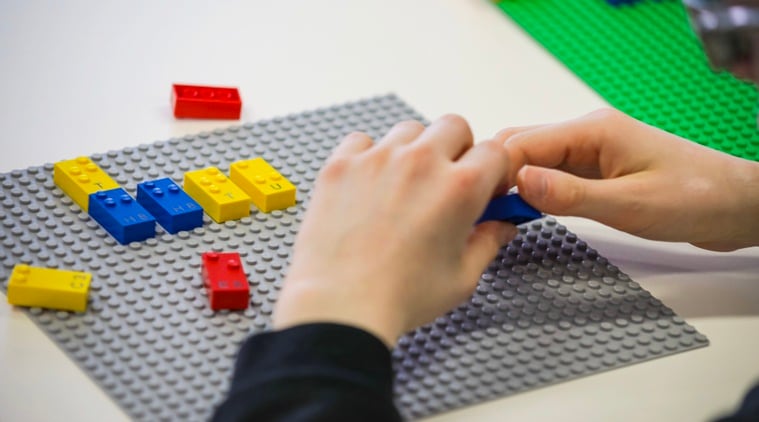Home » Health News »
Lego Is Making Braille Bricks. They May Give Blind Literacy a Needed Lift
Advocates say the product could transform reading for blind and visually impaired children, making the experience of learning Braille more inclusive and helping to combat what has been called a Braille literacy crisis.

A new effort is underway to help blind and visually impaired children more naturally learn to read Braille, a system based on different configurations of six small, raised dots that blind people read with their fingertips. And it is coming in the form of a favorite childhood toy: Lego bricks.
This week, the Lego Foundation, which is funded by the Lego Group, the Danish toy company that makes the blocks, announced a new project that will repurpose the usual knobs atop the bricks as Braille dots. And because the blocks will also be stamped with the corresponding written letter, number or punctuation symbol, they can be played with by blind and sighted children alike. The project, called Lego Braille Bricks, is in a pilot phase and is expected to be released in partnership with schools and associations for the blind in 2020.
“When they get Lego in their hands, it’s intuitive for them,” said Diana Ringe Krogh, who is overseeing the project for the Lego Foundation. “They learn Braille almost without noticing that they are learning. It is really a learning-through-play approach.”
Advocates say the product could transform reading for blind and visually impaired children, making the experience of learning Braille more inclusive and helping to combat what has been called a “Braille literacy crisis.” Though the research is limited, some estimates suggest that just 10 percent of blind children in the United States learn to read Braille, even though Braille literacy is associated with better job outcomes for adults. In 2017, less than half of American adults with visual impairments were employed, according to a disability report by Cornell University.
Braille, once widely taught in schools for the blind, has fallen by the wayside since the 1970s, when the law began requiring public schools to offer equal education to children with disabilities. Blind students were able to join their sighted peers in the classroom, but traditional schools, biased toward sight and facing a lack of specialized teachers, often pushed children with any sight at all to rely on magnified print. And an explosion of accessible technologies, including audiobooks, apps and screen readers, has strengthened reliance on audio, which advocates say cannot effectively teach critical skills like spelling and grammar, let alone complicated math.
“Audio can give you information, but it can’t give you literacy,” said Chris Danielsen, a spokesman for the National Federation of the Blind.
Source: Read Full Article



